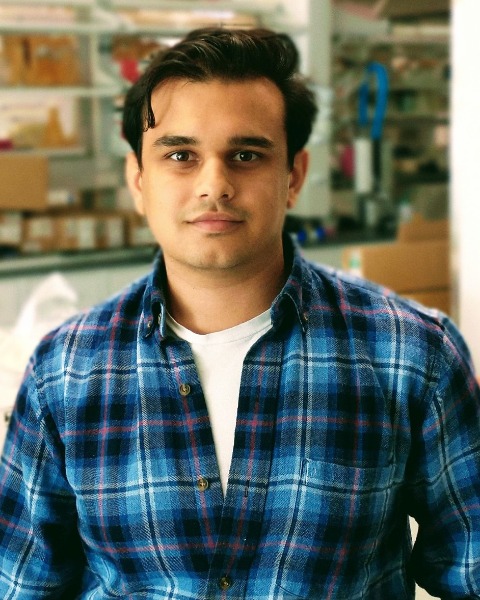Testis/Sperm
Poster Session C
(P-451) Unveiling Sperm Capacitation Dynamics: A Novel Spectral Flow Cytometry and Stochastic Modeling Approach
Friday, July 19, 2024
8:00 AM - 9:45 AM IST
Room: The Forum

Benjamin M. Brisard
Doctoral Student
East Carolina University
Greenville, North Carolina, United States
Poster Presenter(s)
Abstract Authors: Benjamin Brisard1, Aidan Charles1, Ivie Henslee1, Paul Vos2, Debajit Bhowmick3, Cameron A. Schmidt1,4
1. Department of Biology, East Carolina University, Greenville, NC
2. Department of Public Health, East Carolina University, Greenville, NC
3. Flow Cytometry Core, Brody School of Medicine, East Carolina University, Greenville, NC
4. Department of Physiology, Brody School of Medicine, East Carolina University, Greenville, NC
Abstract Text: Mammalian sperm undergo a maturation process known as capacitation, either in the female reproductive tract or under in vitro conditions, to become competent for fertilization. Despite advancements in understanding capacitation's molecular mechanisms, challenges persist, notably in high-precision sperm selection for assisted reproductive technologies like intracytoplasmic sperm injection. The phenotypic heterogeneity and dynamic changes exhibited by capacitating sperm pose difficulties for selection, with sperm heterogeneity and the role of sperm subpopulations in fertility remaining largely unexplored. Currently, there are no quantitative models and few experimental techniques to explore large-scale signaling kinetics or the emergent properties of subpopulations. Here, we introduce a novel ‘high-dimensional’ culture array system combined with spectral flow cytometry to analyze sperm phenotype heterogeneity at single-cell resolution in large cell populations and examine the dynamic interplay between intracellular calcium levels and the acrosome reaction in capacitating mouse epididymal sperm. Additionally, we employ stochastic modeling to predict individual sperm capacitation trajectories from cell population-scale data. This approach not only fills a crucial gap in sperm biology research but also sets the stage for advanced ‘next generation’ male fertility diagnostics, with implications for clinical, agricultural, and basic reproductive biology research.
1. Department of Biology, East Carolina University, Greenville, NC
2. Department of Public Health, East Carolina University, Greenville, NC
3. Flow Cytometry Core, Brody School of Medicine, East Carolina University, Greenville, NC
4. Department of Physiology, Brody School of Medicine, East Carolina University, Greenville, NC
Abstract Text: Mammalian sperm undergo a maturation process known as capacitation, either in the female reproductive tract or under in vitro conditions, to become competent for fertilization. Despite advancements in understanding capacitation's molecular mechanisms, challenges persist, notably in high-precision sperm selection for assisted reproductive technologies like intracytoplasmic sperm injection. The phenotypic heterogeneity and dynamic changes exhibited by capacitating sperm pose difficulties for selection, with sperm heterogeneity and the role of sperm subpopulations in fertility remaining largely unexplored. Currently, there are no quantitative models and few experimental techniques to explore large-scale signaling kinetics or the emergent properties of subpopulations. Here, we introduce a novel ‘high-dimensional’ culture array system combined with spectral flow cytometry to analyze sperm phenotype heterogeneity at single-cell resolution in large cell populations and examine the dynamic interplay between intracellular calcium levels and the acrosome reaction in capacitating mouse epididymal sperm. Additionally, we employ stochastic modeling to predict individual sperm capacitation trajectories from cell population-scale data. This approach not only fills a crucial gap in sperm biology research but also sets the stage for advanced ‘next generation’ male fertility diagnostics, with implications for clinical, agricultural, and basic reproductive biology research.
